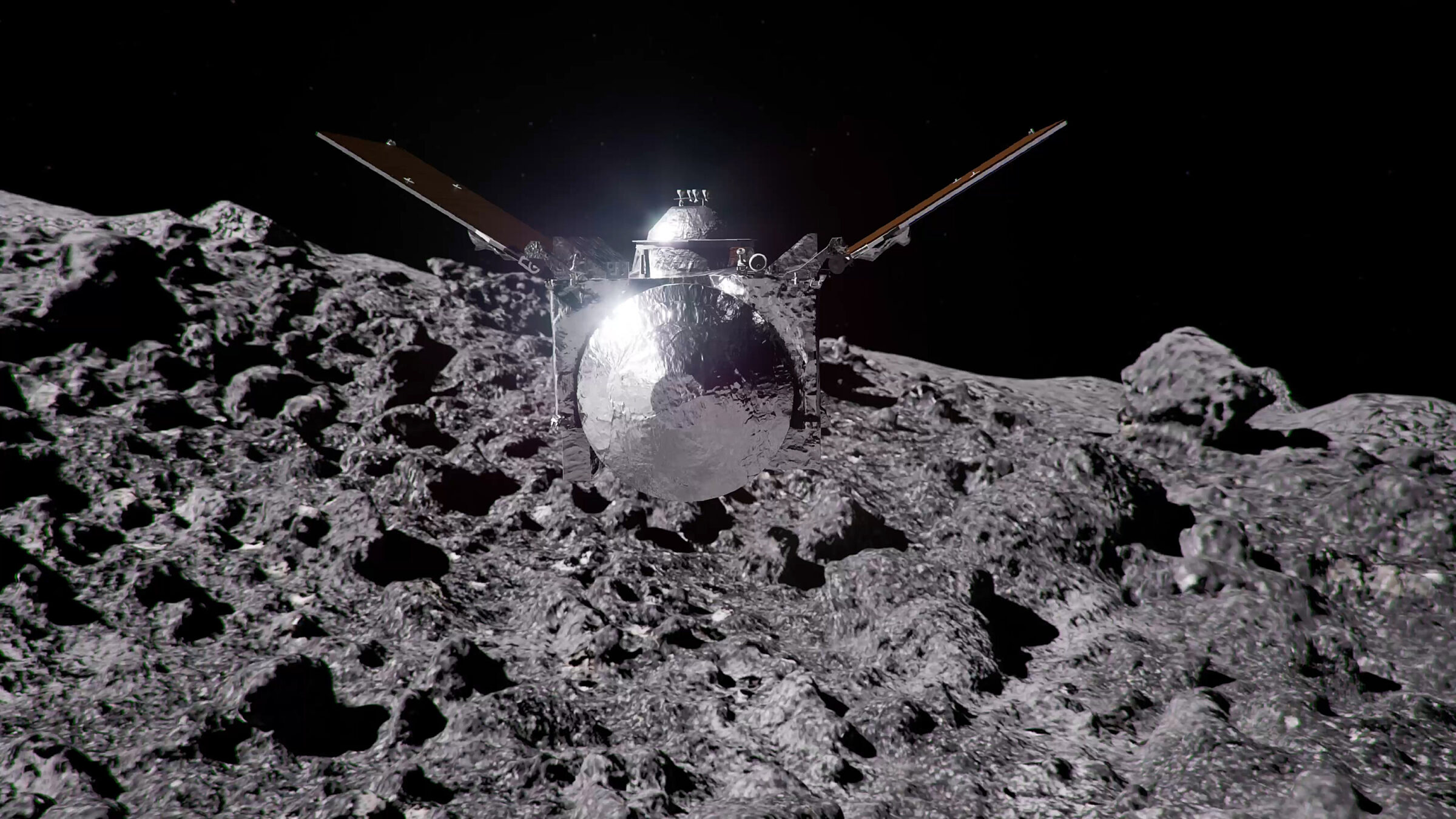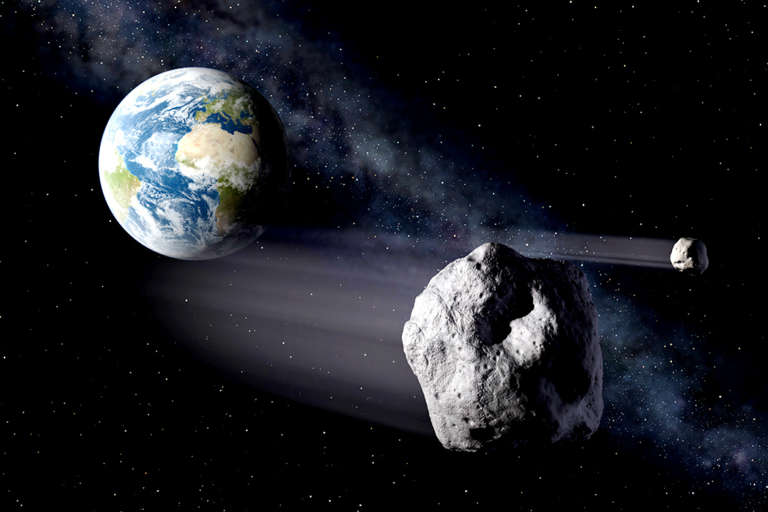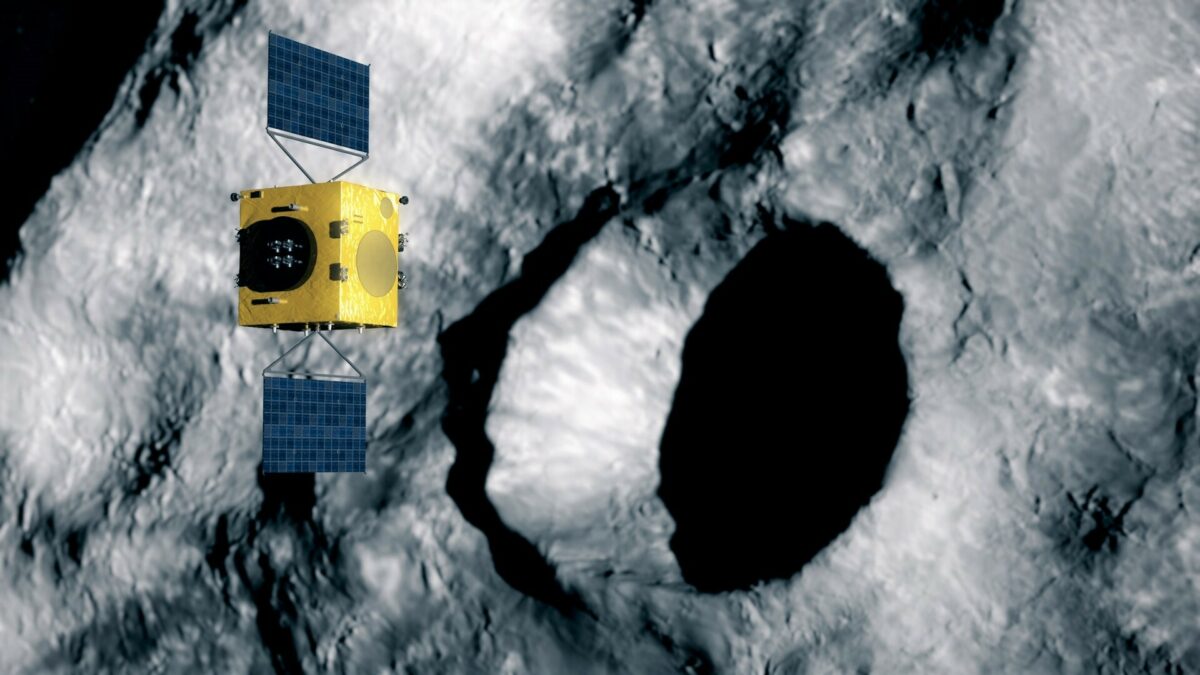Asa Stahl • Aug 22, 2024
Ramses: A new mission racing to land on asteroid Apophis
When a skyscraper-sized asteroid narrowly misses Earth in 2029, three spacecraft may be along for the ride. With two in close orbit — and one on the asteroid itself — the trio, called Ramses, would give humanity front-row seats to the asteroid Apophis as it hurtles past Earth.
But the clock is ticking. With just four years to whip together Ramses in time for launch, the European Space Agency (ESA) has begun work on the project before it is even officially confirmed. Now, scientists are racing to build a space mission that could change how we understand the threat of giant asteroids.

Trailing an asteroid
Putting together a mission like Ramses in just four years is almost unprecedented. Many ESA probes take years to plan and several more years to build. Delays are not uncommon, and launch dates sometimes get pushed back for months or longer.
None of that is a dealbreaker for a typical mission. But if Ramses launches late, it would miss its window to catch up with Apophis before the asteroid reaches Earth. To achieve that full scientific impact, Ramses has almost no room for error.
“It’s a risky mission…but it’s worth it,” said Ian Carnelli, project manager for ESA’s Hera spacecraft and one of the original proponents of Ramses.
Carnelli explains that Ramses would be able to do something that no other telescope or spacecraft can: study Apophis in detail before, during, and after the asteroid encounters our planet.

As Apophis flies by — coming closer than the orbits of geostationary satellites — Earth’s gravitational and magnetic fields will stir up the asteroid, potentially shifting boulders, triggering landslides, and levitating small rocks away from its surface. By watching these changes unfold, Ramses would get a powerful window into Apophis’ structure and makeup. Scientists could then use that knowledge to improve how we deflect asteroids in the future. They could also get a better handle on the small forces that nudge asteroids’ orbits, refining their ability to predict if one might be on a collision course with Earth in the future.
The mission
All of this depends on Ramses (also known as Rapid Apophis Mission for Space Safety) launching in October 2028. The mission could then reach Apophis around February, giving Ramses just enough time to more thoroughly study the asteroid before it flies by Earth.
Once there, the main spacecraft would circle Apophis and map it in increasingly close orbits. It would also deploy two small cubesats: one to help study Apophis from afar, and another to touch down on the asteroid’s surface.

About a week after the near-miss with Earth, another probe would arrive at Apophis. NASA’s OSIRIS-APEX, which is the extended mission of OSIRIS-REx, would work together with Ramses to study Apophis. Each spacecraft would carry its own distinct tools. Ramses would contribute things like a low-frequency radar, a gravimeter, and a lander — but its most important contribution would be studying Apophis before and during the Earth flyby, when OSIRIS-APEX will have yet to catch up.
Learning from the past
There is reason to believe that ESA will be able to launch Ramses on time. Later this year, the agency will launch the Hera mission only five years after it was approved. That spacecraft, which will travel to the asteroid Dimorphos to study the (literal) impact of NASA’s DART mission, was largely developed in four years.
Some doubted that Hera could be realized on such a short schedule, according to Carnelli. ESA had never executed a deep space mission so quickly. But when the Hera team succeeded, it gave them confidence that they could turn around a mission to Apophis at least as fast.
“That was really a key turning point,” Carnelli said.

Now, much of the Hera team is also working on Ramses. As Carnelli puts it, the key to making the launch window for Ramses will be having the spacecraft copy as much of Hera as possible, while still making sure it is different enough to meet its own unique science goals.
Ramses would use the same spacecraft body as Hera. Many other parts are being recreated from previous work or bought out-of-the-box, instead of designed from scratch. ESA is also collaborating with other agencies that are interested in contributing to the mission, especially with instruments that are ready to go now. The Japanese Aerospace Exploration Agency (JAXA) has confirmed that it would provide a spare thermal imager, while NASA has offered a spare camera from OSIRIS-APEX. The Korea AeroSpace Administration (KASA) is in talks about a polarimetry camera, and the Indian Space Research Organisation (ISRO) may join the mission, as well.
Expecting the unexpected
Even with a streamlined strategy, Ramses still faces risks. Some delays simply cannot be planned for. Already, a truck transporting equipment for the mission got into an accident, and a company that manufactures electronics for the spacecraft burned down. Enough bad luck could delay the mission.
“You never know what can happen,” said Carnelli.

ESA has a backup plan if Ramses misses the launch window for Apophis. They would still launch Ramses, but to a different asteroid that might pose a potential threat to Earth in the future. The mission would not get to watch an asteroid encounter Earth, but it would still make discoveries that could help us understand and defend against asteroids.
On the other hand, there is one risk to Ramses that no one needs to worry about: accidentally shoving Apophis into Earth. As Carnelli put it, a collision with the spacecraft would make about as much of an impact on Apophis as a fly would on Mount Everest. Ramses is simply too small to send Apophis toward us.

The future of Ramses
Technically, there is no guarantee that Ramses will launch at all. ESA has yet to confirm the mission. But since that approval can only come at its next ministerial council meeting in November 2025 — too late for even the fastest Apophis mission to start development — ESA has already given the Ramses team permission to start work.
The project has now received €75 million ($83 million). Italy, a major ESA member country, has also indicated it is willing to lead Ramses. With all that support, Carnelli does not doubt the mission’s chances.
“I find it hard to believe that it’s not going to be confirmed,” he said.
If Ramses is approved, and if it manages to launch on time, the mission would leave a legacy unlike any before. The spacecraft would not only be a ticket to a rare cosmic event on our doorstep but also a testament to humanity’s ability to organize a fast, international response to incoming asteroids. Before it arrives at Apophis or even makes a single discovery, Ramses would mark a step forward in how well we can defend Earth.
Defending the Earth from Impacts
Asteroids and comets that come close to Earth can pose a very real threat to our planet, but impacts from these objects aren’t inevitable. With proper planning we can prevent this natural disaster from happening.
Support our core enterprises
Your support powers our mission to explore worlds, find life, and defend Earth. You make all the difference when you make a gift. Give today!
Donate

 Explore Worlds
Explore Worlds Find Life
Find Life Defend Earth
Defend Earth


